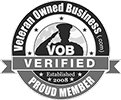It’s hard to believe that we’re almost at the end of 2025. This time of year offers a valuable opportunity to fine-tune your financial plan, ensuring every detail is optimized to improve your after-tax outcomes. The goal isn’t to overhaul your portfolio, but to make measured, high-impact adjustments that quietly compound over time.
At Trajan Wealth, we believe in keeping things straightforward and actionable. Here are seven key areas we can review together before the year is over.
Strategic Tax & Investment Reviews
1.) Prioritize after-tax returns through smart asset location.
After-tax performance is what truly matters to your long-term wealth. Beyond just what you invest in (asset allocation), the strategy of where you hold those investments (asset location) is a powerful tool to help minimize the “tax drag” on your returns.
- Review where your holdings live, whether in taxable accounts or tax-advantaged accounts like your 401(k) or Roth IRA.
- Confirm that tax-inefficient assets, such as actively managed funds with high turnover or securities generating taxable income, are appropriately placed inside tax-advantaged accounts.
2.) Consider tax-loss harvesting.
As we close out the year, review any positions in your taxable accounts that are trading at a loss. By selling these positions, you can realize capital losses to offset any realized gains you have from other sales during the year, which can potentially reduce your tax liability.
- Identify opportunities to sell investments at a loss.
- Remember the “wash-sale rule”, which prohibits buying the same or a “substantially identical” security within 30 days. We can help you navigate this by finding an appropriate replacement to maintain your desired market exposure.
- If your capital losses exceed your gains, you may be able to use up to $3,000 to offset your ordinary income and carry any remaining losses forward.
- Be sure to consult with your tax advisor.
3.) Charitable giving with appreciated securities.
For those with philanthropic goals, donating long-term appreciated shares directly to a charity is often a more tax-efficient strategy than writing a check. You can avoid paying capital gains tax on the gifted amount and potentially receive a tax deduction for the full market value of the security.
- Identify highly appreciated, long-term holdings in your taxable account that you planned to donate.
- Consider using a Donor-Advised Fund (DAF). A DAF allows you to make an irrevocable charitable contribution now for an immediate tax deduction while retaining the flexibility to recommend grants to specific charities over time.
Retirement & Liquidity Management
4.) Maximize retirement contributions & catch-ups.
The end of the year is a natural deadline to ensure you’ve maxed out your contributions to your workplace plan (like a 401(k) or an IRA).
- Catch-up contributions: If you’re 50 or older, you can make additional “catch-up” contributions to your 401(k) and IRA.
- Increase your savings: If you received a raise or bonus late in the year, consider increasing your automated contributions for a few pay periods.
- Consistent, small increases can have an outsized impact as you move towards retirement.
5.) Manage your withdrawal strategy: RMDs and QCDs.
For those in retirement, confirming that you’ve addressed your Required Minimum Distributions (RMDs) is crucial to avoid penalties.
- RMDs: If you are over 73, you must withdraw a certain amount from your traditional IRA or 401(k) by December 31st.
- Qualified Charitable Distributions (QCDs): If you are 70 ½ or older and charitably inclined, you can direct a distribution from your IRA directly to a qualifying charity. A QCD may satisfy your RMD (up to certain limits) and provides tax benefits by excluding the amount from your taxable income.
- Talk with your advisor and tax professional about suitability.
6.) Rebalance with discipline, not emotion.
If market movements have shifted your portfolio’s allocation away from its target, year-end is an excellent time to rebalance. This involves trimming some of your heavier positions and adding to those that are lighter.
- Consider using a rules-based, tax aware approach to rebalancing. This process helps you stay on track toward your goals without being influenced by market headlines.
7.) Plan cash needs for early 2026.
Ensure you have adequate liquidity for near-term expenses, such as taxes, tuition payments, or upcoming travel. Mapping out these cash needs lets your long-term investments stay long-term.
- We can help you review your projected expenses for the next 12 to 18 months. This way, we can determine the appropriate amount to hold in cash or short-term bonds and ensure your long-term portfolio remains invested according to your financial plan.
Bring it All Together
While these year-end strategies are valuable, they are most effective when integrated into a comprehensive, long-term plan. As the year draws to a close, we are here to help you review your portfolio and ensure you’re making the right moves for your specific situation.
Your Trajan Wealth Advisor is Ready to Help!
Remember, the best strategies are those that are customized to your unique financial life. Don’t let these opportunities slip away. We invite you to take the next step toward a stronger financial future. Your Trajan Wealth advisor is ready to help!
Important Disclosures:
This material is for informational and marketing purposes only and not individualized tax or investment advice. Investing involves risk, including loss of principal. Consult your tax professional regarding your specific situation.
Sources
IRS. Topic No. 409, Capital Gains and Losses (wash-sale, $3,000 loss offset). IRS
IRS. Publication 550: Investment Income and Expenses (wash-sale details). IRS
IRS. Retirement Topics—Required Minimum Distributions (RMDs) (age 73). IRS
IRS. Publication 590-B: Distributions from IRAs (RMD/QCD context). IRS
IRS. Publication 526: Charitable Contributions (QCD notes; charitable rules). IRS
IRS. Newsroom: 2025 Retirement Plan Limits (401(k) $23,500; IRA $7,000; catch-ups). IRS
IRS. Donor-Advised Funds (definition & framework). IRS
Vanguard. Asset location—after-tax return benefits and research paper. Vanguard+1
Vanguard. Rebalancing research (framework/frequency). Vanguard+1


